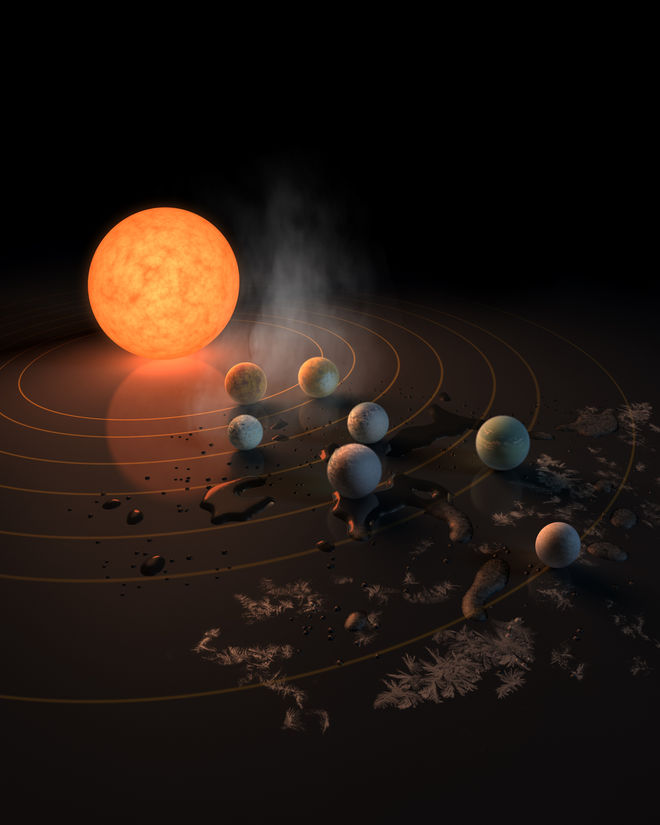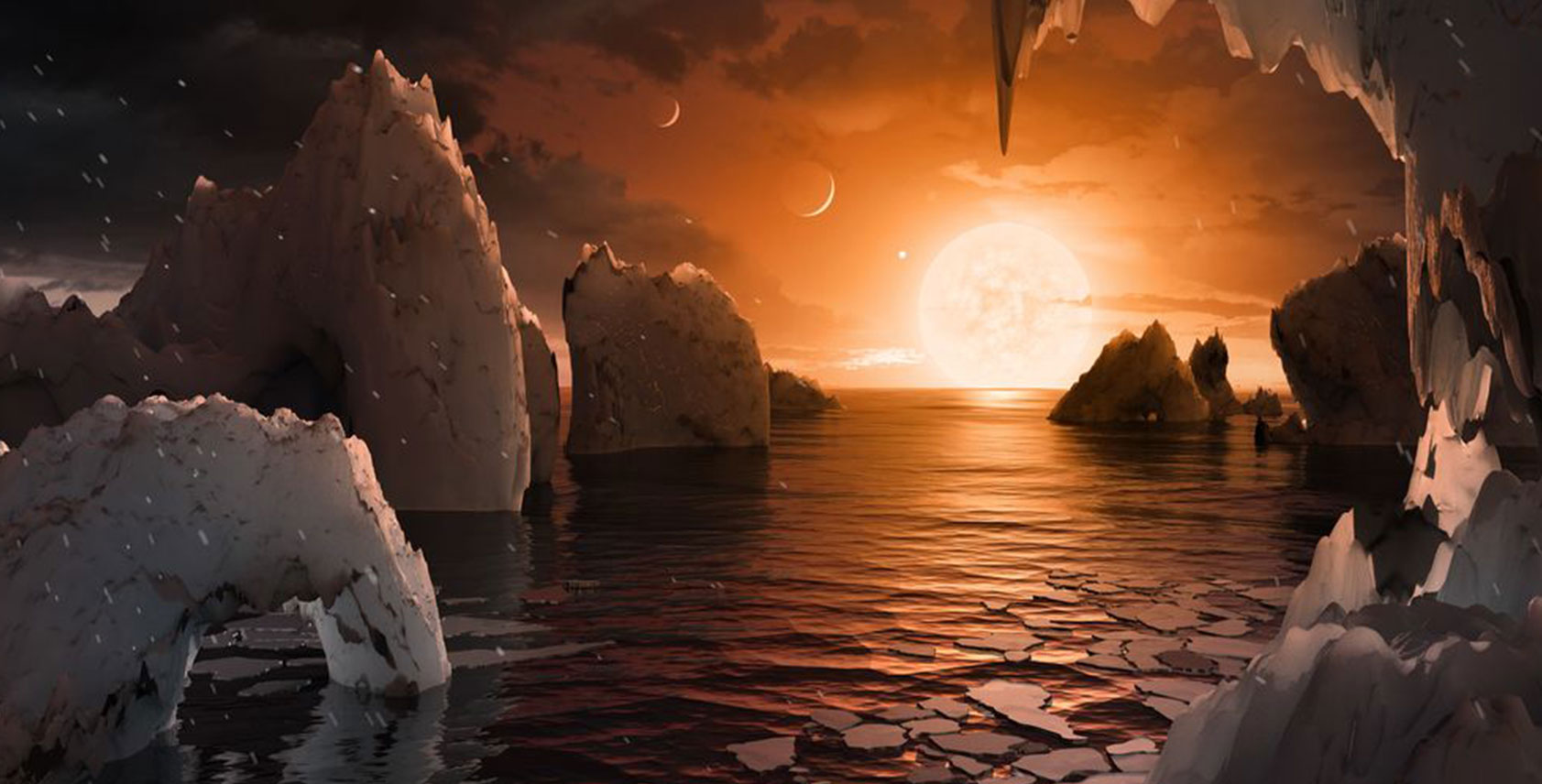Paging Mulder and Scully: A Newly-Discovered Solar System Could Possibly Support Life
Between Trump, global warming, and the fact that we’ve still got another 295 days until the new Star Wars movie, life on planet Earth has left a lot to be desired lately.
Which makes the latest announcement out of NASA pretty exciting – according to the news coming out of today’s press conference, astronomers have discovered seven Earth-sized planets orbiting a dwarf star called Trappist-1. And three of them are in what’s considered the “habitable zone” necessary to support life. (Cue The X-Files theme.)
“Finding a second Earth is not just a matter of if, but when,” says NASA’s Thomas Zurbuchen.
Before you start packing your things and forwarding your mail though, we’re still at least a few decades away from living out the plot of Interstellar and moving mankind across the galaxy.

For starters, Trappist-1 is 39 light years away and, uh, last we checked, speed-of-light travel is still more science fiction than science. Meaning, no, there’s no way for us all to leave town before the 2020 election.
Still, the discovery offers astronomers their most promising opportunity yet to search for signs of life outside our solar system. For years, mankind has been looking for proof we’re not alone in the universe. This afternoon, we took a big leap toward finally getting some answers. And if we’ve learned anything from alien movies over the years, there’s nothing that could possibly go wrong there.










